
About Retailing and Retail Industry
Retail is the sale of goods and services from individuals or businesses to the end-user. The retail industry provides consumers with goods and services for their everyday needs. Retailing is a critical part of an integrated supply-chain system.
A retailer purchases goods or products in large quantities from manufacturers or directly through a wholesaler, and then sells smaller quantities to the consumer for a profit. This industry is comprised of a variety of stakeholders. Modern retail players offer the flexibility to buy products from around the world to the consumers. This has been possible due to the model of global supply chain that ensures their products can be cost-effectively sourced from various locations and delivered to individual consumers irrespective of their locations.
The term “retailer” is also applied where a service provider services the needs of a large number of individuals, such as a public utility, like electric power. This sector has its own dynamics and challenges and retail industry players adopt unique strategies to overcome these global challenges in order to offer customers the right products at the right time for the right price.
The Global Retail Industry:
Global: Retailing is the largest private sector in the world and the prime mover of the economy. It accounts for almost 10% of the GDP of most developed nations. Retail industry is predominant in developed countries like USA, UK etc. The Industry is also a major employer in most of the economies- up to 16% in US, 15% in Brazil, 12% in Poland and 7% in China. Typically, the top 250 global retailers have combined sales of approximately $4 trillion USD. The top ten retailers account for $1.2 trillion, or about 30% of those sales.
United States of America: In USA, the retail industry employs about 22 million people and generates more than three trillion dollars sales annually. The United States retail sector features the largest number of large, lucrative retailers in the world. Out of world’s top 250 largest retailers by retail sales revenue – 32% of retailers were based in the United States, and those 32% accounted for 41% of the total retail sales revenue of the top 250. The retail industry is a massive part of the overall U.S. economy and retail establishments accounted for 18 percent of all nonfarm private sector jobs and had sales of $3.2 trillion. Many retail niches are characterized by a healthy population of smaller enterprises and vast majority of retail employees in the United States work at establishments with fewer than 20 employees. There is also a huge concentration of large retail firms in USA – 10 % of food and general merchandise firms account for over 40% of all retail sales. Some of these large retail chains eliminate the whole sellers and buy direct from the manufacturers making the supply chain very efficient.
Japan: In Japan, on the other hand, small firms and stores govern the retail sector. The wholesale channel is relatively much larger. Merchandise has to pass through three to four channel members before reaching the store. This results in reduced efficiency and higher manpower and distribution costs. In Japan, 20% of workforce is employed in retail as against 10% in USA.
Europe: In Europe there is a high concentration of retail sales in some countries like UK and Germany. In UK, over 80% of retail sales in food are accounted by 5 large chains. In Southern Europe the market is more fragmented and we find traditional small family owned stores.
Understanding the Retail Industry Model
Business Model
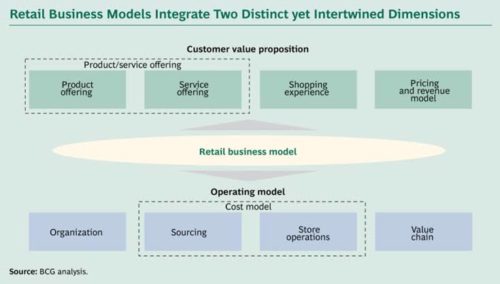 A retail business like any other type of business can be owned by different types of entities. It could be a sole proprietor, partnership concern, corporation, a cooperative body, joint venture or other types of legally permitted formats. A majority of retail business in India are sole proprietorships and partnerships due to their nature. Every business has its distinctive way of organizing the very many activities that are involved in delivering its product or service to the end consumer. In retail parlance, one would term it as the format adopted by the retailer to reach his end consumer.
A retail business like any other type of business can be owned by different types of entities. It could be a sole proprietor, partnership concern, corporation, a cooperative body, joint venture or other types of legally permitted formats. A majority of retail business in India are sole proprietorships and partnerships due to their nature. Every business has its distinctive way of organizing the very many activities that are involved in delivering its product or service to the end consumer. In retail parlance, one would term it as the format adopted by the retailer to reach his end consumer.
Retail enterprises can be either independently owned or operated or part of a chain. Chains may all be owned by a single company, and the individual stores may be franchises that are independently owned by a small businessperson. Many different types of retail establishments exist, and, as noted above, the overall industry has seen a significant blurring of the boundaries that had long separated the wide range of companies operating under the retail umbrella.
A retail business model articulates how a retailer creates value for its customers and appropriates value from the markets. Given below are the main types of business models that exist in the retail industry:
Independent Retailer: Independent retailers are the entrepreneurs who have built their business from the ground up. They can take help from various agencies in the process like consultants, builders, or other contractors, but the decision making authority always rests with the independent retailer, who is also the owner of the retail enterprise. Independent Retailer generally operates one outlet and offers personalized service, at a convenient location and establishes close customer contact.
Roughly 90% of all the retail businesses are managed and run by independents, including barber shops, drycleaners, furniture stores, bookshops, Gas Agencies and neighborhood stores. This is due to the fact that entry into retailing is easy and it requires low investment and little technical knowledge. This obviously results in a high degree of competition. Many independent retailers fail because of the ease of entry, poor management skills and inadequate resources.
Existing Retail Business: This categorization includes those retailers who have taken over an existing business by investing in it. They gain ownership of an existing business and use that foundation to build upon it. The primary benefits are the goodwill and reputation that comes with the enterprise. This brings down the entry level risks as the business has already been established by the previous owner.
Retail Chain: This business model involves common ownership of multiple units where the purchasing and decision making is centralized. It can be defined as ’’ a group of two or more stores whose activities are determined and coordinated by a single management group”. Stores that are part of a Chain often rely on, specialization, standardization and elaborate control systems. Retail chains are able to serve a large dispersed target market and maintain a brand name for their chain. Chain stores have the opportunity to take advantage of "economies of scale" in buying and selling goods. They can maintain their prices, thus increasing their margins, or they can cut prices and attract greater sales volume. Examples of retail chains in India are Shoppers stop; West side and IOC, convenience stores at select petrol filling stations.
Retail Franchising: Franchise is a store with the right to use a certain business name, product, and business model. Franchising is the practice of using another firm's successful business model. The word 'franchise' is of Anglo-French derivation - from franc - meaning free, and is used both as a noun and as a (transitive) verb. For the franchisor, the franchise is an alternative to building 'chain stores' to distribute goods that avoids the investments and liability of a chain. The franchisor's success depends on the success of the franchisees. The franchisee is said to have a greater incentive than a direct employee because he or she has a direct stake in the business.
The franchisee receives marketing, support, and training from the franchisor in order to make the lay the foundation, use the trusted business strategies and drive economies of scale in buying and selling. It is a contractual arrangement between a "franchiser" and a "franchisee" which allows the latter to conduct a certain form of business under an established name and according to a specific set of rules.
The franchise agreement gives the franchiser much discretion in controlling the operations of small retailers, in exchange for fees, royalties and a share of the profits, the franchiser offers assistance and very often supplies as well. Classic examples of franchising are McDonalds, Subway, PizzaHut and Nirulas.
Retail Cooperatives: A retail cooperative is a group of independent retailers that have combined their financial resources and their expertise in order to effectively control their wholesaling needs. They share purchases, storage, shopping facilities, advertising planning and other functions. The individual retailers retain their independence, but agree on broad common policies. “Amul” is a typical example of a cooperative in India.
Retail Dealership: Dealership is a cross between a franchise and an independent retailer. A dealership is an authorized seller that has the right to sell a particular brand of products, and usually doesn't have to pay any fees to the licensor. When setting up a dealership, the dealer generally doesn't receive any support.
Network Marketing: This is a unique business model that involves not only selling a product, but also recruiting other salespeople to sell the same product. In this way, sales of the product depend entirely on the people in the network. Multi-level marketing (MLM) is a marketing strategy in which the sales force is compensated not only for sales they personally generate, but also for the sales of the other salespeople that they recruit. This recruited sales force is referred to as the participant's "downline", and can provide multiple levels of compensation. Other terms used for MLM include pyramid selling, network marketing, and referral marketing. Most commonly, the salespeople are expected to sell products directly to consumers by means of relationship referrals and word of mouth marketing.
Revenue Model
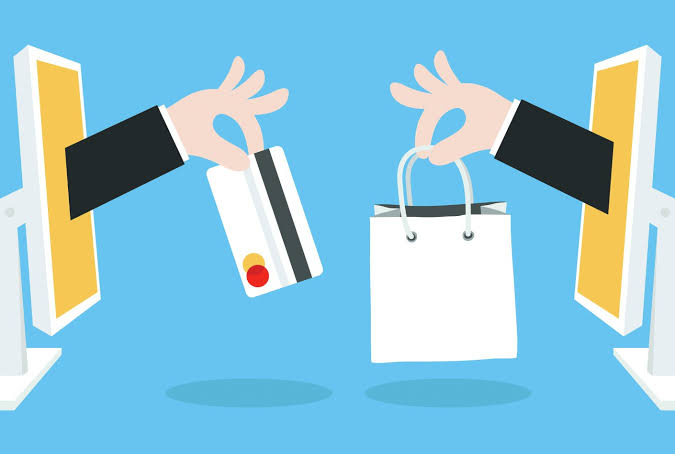 Successful retail operations depend largely on two main dimensions: margin and turnover. How far a retail enterprise can reach in margin and turnover depends essentially on the type of business (product lines) and the style and scale of the operations. In addition the turnover also depends upon the professional competence of the enterprise. Margin is defined as the percentage mark tip at which the inventory in the store is sold and turnover is the number of times the average inventory is sold in a year.
Successful retail operations depend largely on two main dimensions: margin and turnover. How far a retail enterprise can reach in margin and turnover depends essentially on the type of business (product lines) and the style and scale of the operations. In addition the turnover also depends upon the professional competence of the enterprise. Margin is defined as the percentage mark tip at which the inventory in the store is sold and turnover is the number of times the average inventory is sold in a year.
In a given business two retail companies may choose two different margin levels, and yet both may be successful, provided the strategy and style of management are appropriate. Given below are some revenue models adopted by the players of the retail industry:
Low Complexity, Low Margin, High Turnover Potential
The most common and most profitable revenue model is that of the traditional retailer. The traditional retailer profits by selling products and services directly to buyers at a mark-up from the actual cost. In the first model the retailer assumes that low price is the most significant determinant of customer patronage. Low cost retailers generally sell to the mass market with a strong emphasis on price over quality or other premium product/service attributes.
The stores in this category price their products below the market level. Marketing communication focuses mainly on price. Low cost retailers typically offer a high number of SKUs at the best possible price. By emphasizing price, the low cost retailer operates on very low margins and must have the market power to negotiate deep discounts from its suppliers, coupled with significant operational efficiencies. They provide very few services; if any, and they normally entail an extra charge whenever they do. The merchandise in these stores is generally pre-sold or self-sold. This means that the customers buy the product, rather than the store selling them.
Amazon and Wal-Mart serve as the best examples of low cost retailers. Wal-Mart benefits from its vast size in the physical retail space, leveraging its volume operations in the digital space. Amazon has created its own efficiencies using digital technology. Pantaloon Chain and Flipkart are the Indian examples of such stores.
High Margin Low Turnover
This operation is based on the premise that distinctive merchandise, service and sales approach are the most important factors for attracting customers. Premium retailers target highly segmented markets with an emphasis on prestige, quality, and performance much more than price. Stores in this category price their products higher than those in the market, but not necessarily higher than those in similar outlets. Many premium retailers find that higher prices positively correlate to the prestige of the brand. In many cases, the premium retailer sells its own branded products instead of reselling other brands. The focus in marketing communication is on product quality and uniqueness.
Merchandise is primarily sold in store and not pre-sold. These stores provide a large number of services and sell select, categories of products. They do not stock national brands which are nationally advertised. These retailers manufacture their own or work with contract manufacturers to develop name brand products for sale at premium prices. Typically, a store in this category is located in a down town area or a major shopping center. Sales depend largely on salesmanship and image of the outlet.
Williams-Sonoma and Victoria's Secret are examples of premium retailers who have developed its own mainstream premium product category by selling quality, private-label products. Gilt Groupe is an example of a digital premium retailer that has created an outlet to sell other premium brands to a targeted group of customers.
High Margin High Turnover Stores
These stores generally stock a narrow line of products with turnover of reasonably high frequency. Cost plus retailers generally sell to a segmented mass market, trying to maintain comfortable margins instead of focusing on price, and justifying those margins through quality, service, and selection.
They could be situated in a noncommercial area but not too far from a major thoroughfare. Their locational advantage allows them to charge a higher price. High overhead costs and, low volumes also necessitate a higher price. Most cost plus retailers choose specific product segments, such as computers and electronics or office supplies, and develop a level of expertise that mass market retailers cannot match. Others may offer a broad product offering but emphasize shopping experience or a higher level of customer service.
Staples and Best Buy represent the best examples of cost plus retailers that focus on specific product categories, while Target is a good example of a cost plus retailer that offers a broad array of products.
Low Margin-Low Turnover Stores
Retail enterprises in this category are pushed to maintain low margins because of price wars. Compounding this problem is the low volume of sales, which is probably a result of poor management, unsuitable location etc. such businesses, normally get wiped out over a period of time. These retailers spend most of their time fighting for sales volume and trying to build customer loyalty.
Retail Industry - Top 10 Future Trends
The Retail Industry was valued at USD 23,460 billion in 2017 and is expected to register a CAGR of 5.3% during the forecast period (2018 - 2023), to reach USD 31,880.8 billion by 2023.
The market provides products such as food, apparel, furniture, jewelry, and various others. Apart from this, the stores can be classified into the convenience store, specialty retailer, internet retailing, and various others. The scope of our study is geographically limited to North America, Europe, Asia Pacific, Latin America, and Middle East & Africa.
The retail market is mature and highly competitive in the developed economies of Europe and North America. On the other hand, the developing economies of Asia-Pacific, Middle East, and Latin America have been instrumental in driving the market growth. Consumer spending, which typically accounts for around two-thirds of the GDP, has been a key indicator of the health of the retail market. Moreover, the increasing strength of online shopping has been a major driver. Apart from this, the growing smartphone penetration across countries is driving the e-commerce channel. Also, Internet of Things (IoT) is reshaping the retail industry. It is being deployed to revolutionize the industry. However, price variation between online and brick & mortar stores can challenge the retail market growth.
Technology is changing the way every industry does business by helping to create efficiencies, save money, and provide better products and services. Retail businesses are also adopting technology to their advantage. Here are 10 of the top tech trends that will transform shopping.
Extended Reality
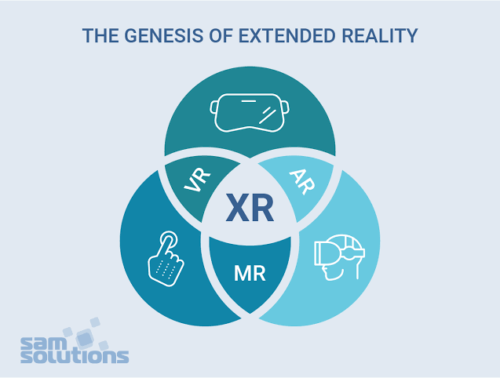 Virtual and augmented reality offer retailers several ways to enhance the customer experience. From browsing products to virtually “trying them on,” extended reality is already in use by many retailers today. Teen surf and sports clothing retailer Tilly’s offered its customers a back-to-school scavenger hunt experience that helped their customers explore different clothes and accessories. Extended reality can also provide additional information for customers when they are browsing for products such as the “Living Wine Labels” from Treasury Wines Estates. The IKEA Place ARKit app helps you determine if the furniture you want to purchase will fit and look good in your home. In the future, extended reality will eventually enable consumers to be able to share their virtual reality shopping experience with others.
Virtual and augmented reality offer retailers several ways to enhance the customer experience. From browsing products to virtually “trying them on,” extended reality is already in use by many retailers today. Teen surf and sports clothing retailer Tilly’s offered its customers a back-to-school scavenger hunt experience that helped their customers explore different clothes and accessories. Extended reality can also provide additional information for customers when they are browsing for products such as the “Living Wine Labels” from Treasury Wines Estates. The IKEA Place ARKit app helps you determine if the furniture you want to purchase will fit and look good in your home. In the future, extended reality will eventually enable consumers to be able to share their virtual reality shopping experience with others.
Predictive Analytics (Big Data)
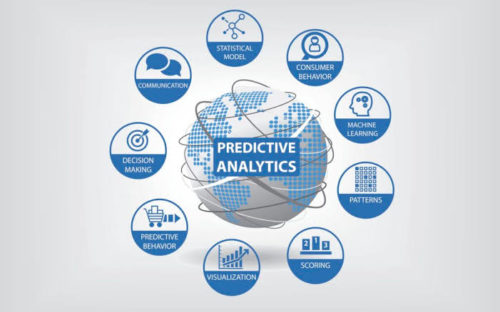 Retail organizations have never had an issue collecting lots of data, but analyzing it and using the data to solve problems or create new solutions has been a struggle. Predictive analytics changes that. Now retailers can be proactive about the future by analyzing consumer behavior and trends from the past. When retailers successfully analyze data, they are able to understand important information about consumer purchasing behavior, personalize the shopping experience, address a consumer's needs based on where they are in the customer journey, improve efficiencies and reduce costs of supply chains and more. Predictive analytics helps retailers be smarter, more efficient, and reduce costs.
Retail organizations have never had an issue collecting lots of data, but analyzing it and using the data to solve problems or create new solutions has been a struggle. Predictive analytics changes that. Now retailers can be proactive about the future by analyzing consumer behavior and trends from the past. When retailers successfully analyze data, they are able to understand important information about consumer purchasing behavior, personalize the shopping experience, address a consumer's needs based on where they are in the customer journey, improve efficiencies and reduce costs of supply chains and more. Predictive analytics helps retailers be smarter, more efficient, and reduce costs.
Micro Moments
 Think about how you use Google or your favorite search engine. You rely on finding what you need in the moment, whether that's for a celebration, how to fix something or solve a problem like where to find a restaurant to satiate your hunger for Italian food. Retailers who can meet customers "in the moment" have a powerful advantage. Thanks to direct digital access to consumers and powerful analytics capabilities, businesses can capture moments and help customers during their moment of need and even anticipate what a customer might need before they even know it.
Think about how you use Google or your favorite search engine. You rely on finding what you need in the moment, whether that's for a celebration, how to fix something or solve a problem like where to find a restaurant to satiate your hunger for Italian food. Retailers who can meet customers "in the moment" have a powerful advantage. Thanks to direct digital access to consumers and powerful analytics capabilities, businesses can capture moments and help customers during their moment of need and even anticipate what a customer might need before they even know it.
Recommendation Engines
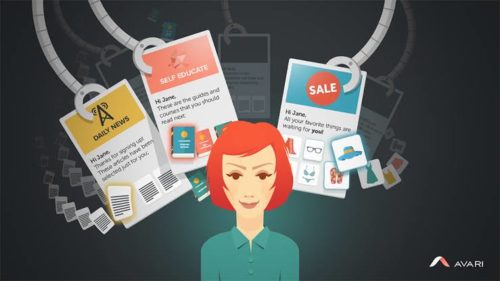 Another powerful tech tool for retailers is recommendation engines that help customers find things they never knew they needed and to help funnel options to a consumer at relevant times in their shopping journey. Recommendation engines get better over time. The more data the algorithms have to assess a customer’s shopping behavior, the better the recommendations. Retailers get to benefit from higher cart sales and improved customer satisfaction thanks to the ease of use. Amazon, Netflix, and Spotify are the recommendation engines you might be most familiar with, but many other retailers such as Best Buy use them too.
Another powerful tech tool for retailers is recommendation engines that help customers find things they never knew they needed and to help funnel options to a consumer at relevant times in their shopping journey. Recommendation engines get better over time. The more data the algorithms have to assess a customer’s shopping behavior, the better the recommendations. Retailers get to benefit from higher cart sales and improved customer satisfaction thanks to the ease of use. Amazon, Netflix, and Spotify are the recommendation engines you might be most familiar with, but many other retailers such as Best Buy use them too.
Order Fulfillment Automation
 By the end of 2025, more than 580,000 autonomous mobile robots (AMR) will be deployed to help warehouses fulfill customer orders. Many retailers are scrambling to adjust to the “Amazon Effect” and are exploring order fulfillment automation to try to increase the speed and flexibility of operations in order to compete with Amazon. This automation can significantly reduce order processing times. In addition, warehouses have struggled to find enough human laborers to keep up with demand, so automated systems are an attractive solution.
By the end of 2025, more than 580,000 autonomous mobile robots (AMR) will be deployed to help warehouses fulfill customer orders. Many retailers are scrambling to adjust to the “Amazon Effect” and are exploring order fulfillment automation to try to increase the speed and flexibility of operations in order to compete with Amazon. This automation can significantly reduce order processing times. In addition, warehouses have struggled to find enough human laborers to keep up with demand, so automated systems are an attractive solution.
Face Recognition
 Many of the most successful retailers have online and offline presences. Facial recognition technology helps retailers proactively battle shoplifting and retail crime. In addition, it can bring the personalized online shopping experience to the brick-and-mortar location. When a customer is identified through facial recognition technology, the store staff can better respond to that customer's unique needs. There are certainly legal and privacy concerns to be worked out, but there are several advantages for retailers who adopted facial recognition technology.
Many of the most successful retailers have online and offline presences. Facial recognition technology helps retailers proactively battle shoplifting and retail crime. In addition, it can bring the personalized online shopping experience to the brick-and-mortar location. When a customer is identified through facial recognition technology, the store staff can better respond to that customer's unique needs. There are certainly legal and privacy concerns to be worked out, but there are several advantages for retailers who adopted facial recognition technology.
Stock Management
Automated warehouses help improve inventory control. Rather than wait for manual inventories, smart robotics and computer systems keep reliable stock data in real-time. This accurate data helps retailers manage stock flow, make solid predictions, smart decisions, and forecasting that help improve the store's bottom line. Better inventory management of raw, in-process, and finished goods reduces waste, spoilage, and even theft.
Robotic Store Assistants
Another tech trend that’s changing shopping is robotic store assistants. Robots like Pepper can help shoppers find the merchandise they are looking for and answer questions. They can even email special offers or coupons. Home improvement store Lowe's has the LoweBot that helps with in-store customer service.
Customer Chat Bots
There has been rapid adoption of messaging-based customer service bots across retail. At least 50% of the Fortune 5000 have experimented with and tested out bots. Messaging has become the preferred customer service channel, so call volume will be reduced. Artificial intelligence bots will be able to improve the customer journey pre- and post-sales by lowering cart abandonment and help customers solve problems after the sale without human intervention.
Internet of Things (IoT) and Smart Equipment
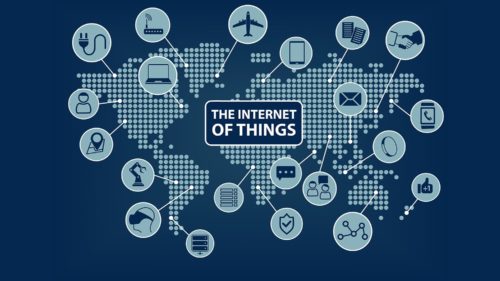 The Internet of Things and smart equipment will transform the shopping experience. Thanks to the volumes of data we have available and the ability to process it, consumers can receive a personalized shopping experience that wasn’t possible before. Today’s consumers want experiences that include personalization and information to help them make decisions. Internet of Things technology helps stores deliver these experiences to these customers. Smart equipment such as sensor-embedded shelves that track inventory will also change retail operations.
The Internet of Things and smart equipment will transform the shopping experience. Thanks to the volumes of data we have available and the ability to process it, consumers can receive a personalized shopping experience that wasn’t possible before. Today’s consumers want experiences that include personalization and information to help them make decisions. Internet of Things technology helps stores deliver these experiences to these customers. Smart equipment such as sensor-embedded shelves that track inventory will also change retail operations.







 Robotic Store Assistants
Robotic Store Assistants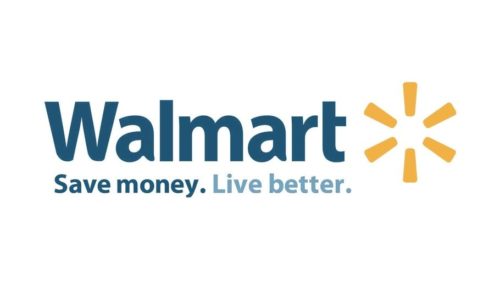
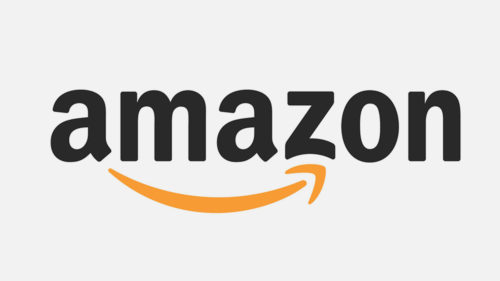
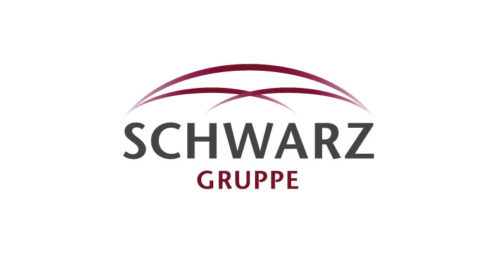
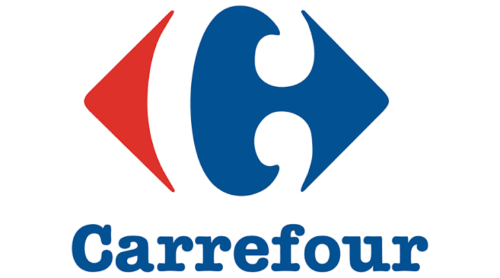

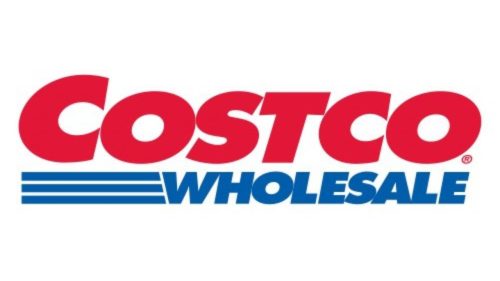
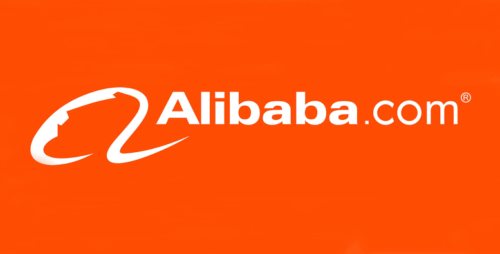
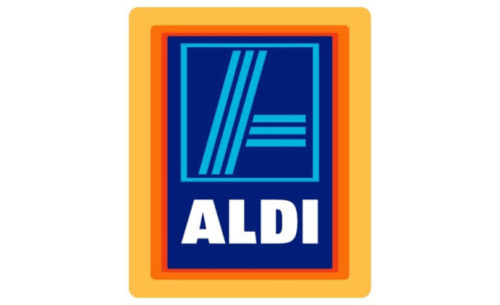
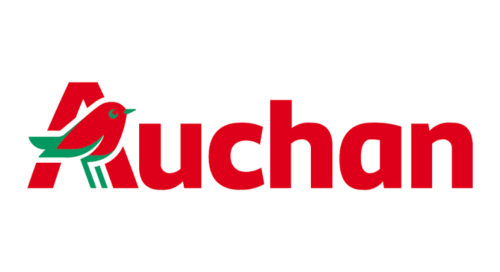
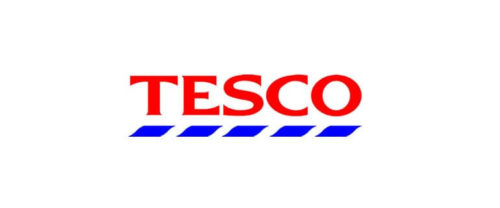

Leave a Reply